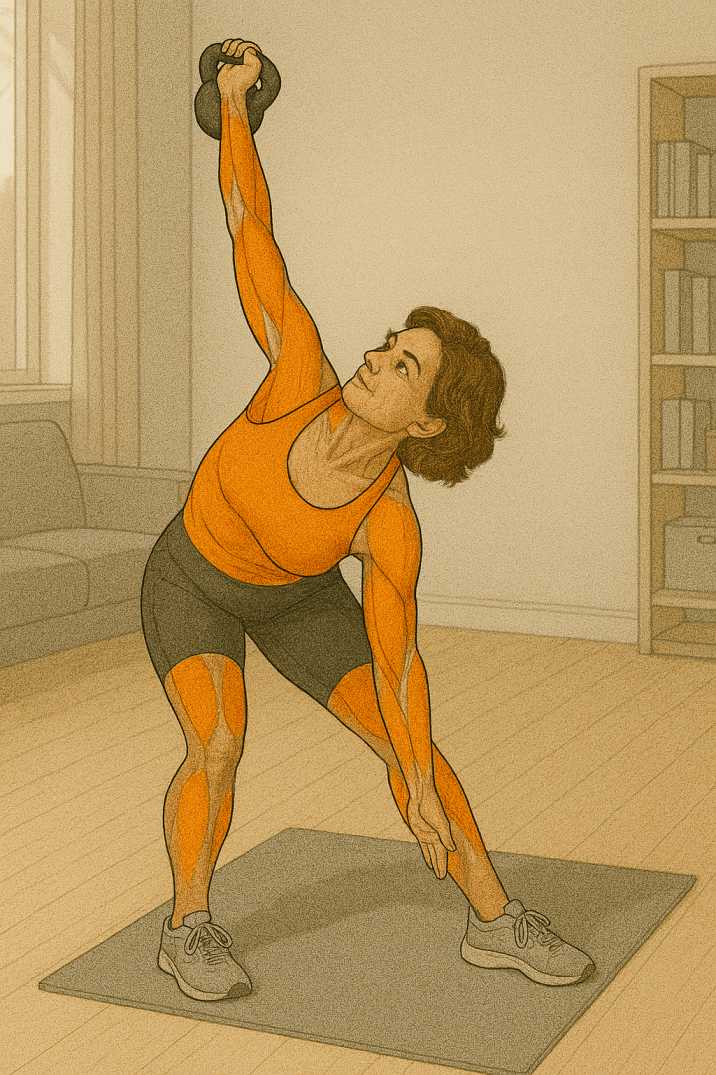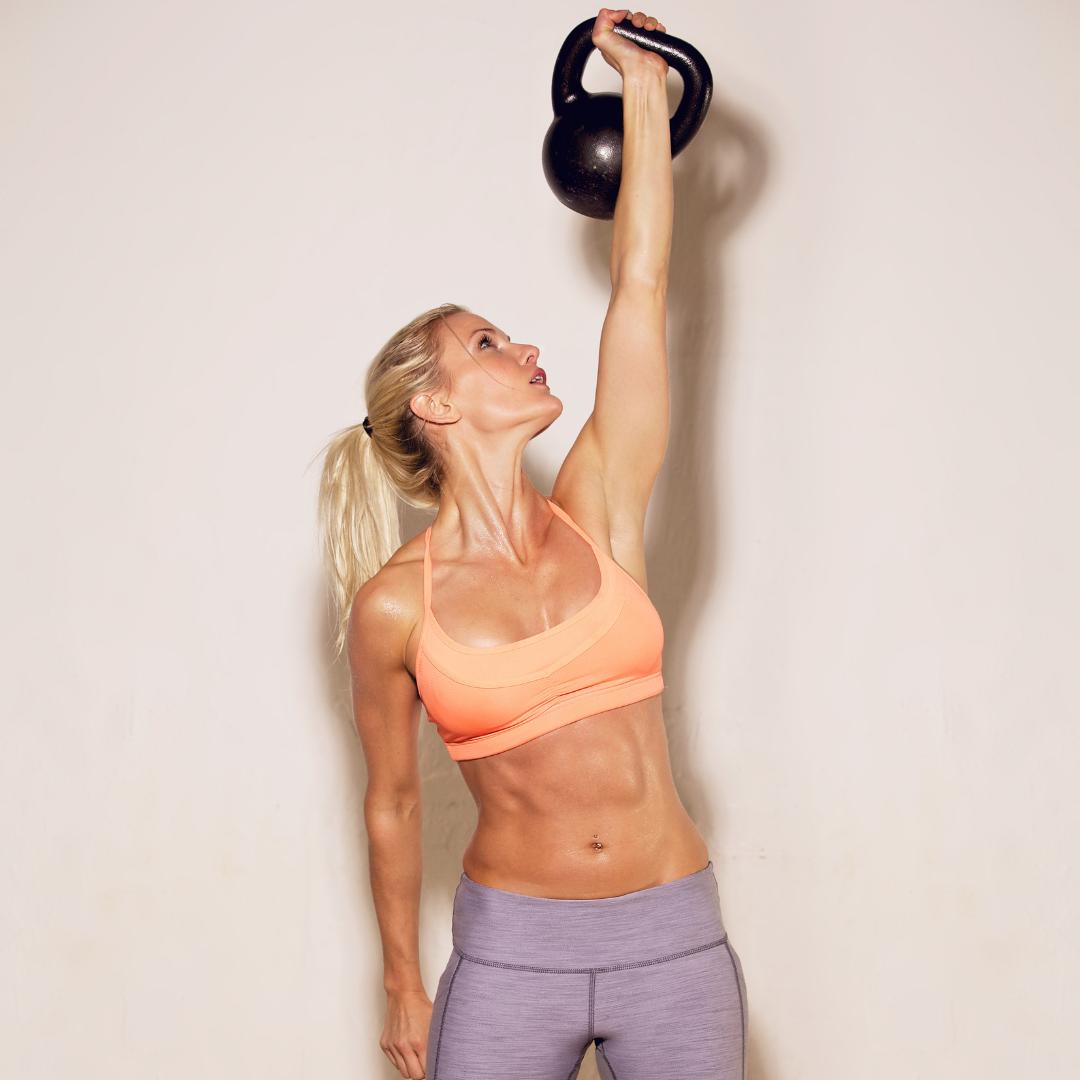The Importance of Windmill Exercises in Your Routine
If you are looking to incorporate an exercise that is unique, effective and functional for the core, windmill exercises should be a top choice for strength. Windmills work not just superficial muscles like basic crunches or regular planks that tend to be stressful, windmills engage the deep stabilizing muscles that are engaged for original world movement.
Windmills have active work using not just the core muscle of the abs, it works muscles in the glutes, obliques, hips, and shoulder, making this one of the most functional core mechanics we can have. It doesn't matter if you are an athlete that wants more rotational power, or in rehab getting better posture and mobility, windmills benefit everyone.
The windmill is a rotational, multi joint movement incorporating facets of strength, balance, and flexibility. Windmills are typically performed holding some form of weight (kettlebell, dumbbell, etc.) in one hand overhead and hinging at the hip with the opposite arm reaching down toward the floor. This can be seen more as a windmill blade rotating from the trunk, therefore the name.
Windmills can be executed in different ways:
- Bodyweight Windmills
- Kettlebell Windmill
- Dumbbell Windmills
- Seated or Half-Kneeling Windmills
There are three different types of windmill exercises, each progressively more difficult, and one that can be tailored to fit anyone's fitness level.
%20(1).png)
Muscles Worked in Windmill Exercise

Windmill exercises are great for functional fitness because the windmill engages multiple muscle groups all at one time. Those muscles are:
- Core: the obliques, rectus abdominis, transverse abdominis
- Shoulders/arms: deltoids, rotator cuff, triceps
- Back: erector spinae, lats
- Hips/glutes: gluteus medius and maximus
- Legs: hamstrings (especially because of the hip hinge)
Not only does this one move provide strength benefits, but it also enhances coordination and balance.
%20(1).png)
Advantages of Windmill Exercises
- Increased Core Stability
Windmills improve core control (especially from the obliques and deep stabilizers) so this will improve your posture and reduce back pain.
- Increased Shoulder Mobility and Stability
Keeping a weight overhead strengthens the stabilizers of the shoulder and improves range of motion and control.
- Hip Flexibility and Functionality
The hip hinge of a windmill promotes flexibility and strength at your hips and hamstrings, which are important for functional movement for daily life and sports.
- Enhanced Rotational Strength
Windmills illuminate motion in the transverse plane and teach you to more effectively twist for movement in sports such as tennis, baseball, and golf.
- Spinal Alignment/Posture
Together, controlled rotation with controlled side-to-side motion will aid in stabilizing and promoting better spinal health and balancing posture.
- Injury Prevention
By teaching your body to stabilize and control movements in multiple planes, windmills work to decrease the potential for injury, especially in the lower back/shoulders/hips.
- Gains in Functional Strength
Windmills easily transfer to daily activity including reaching/bending/rotating so they are excellent for functional training.
How To Perform A Basic Windmill (Step-By-Step Instruction)
Here's how to do kettlebell windmill:
- Start with your feet more than shoulder-width apart with the toes slightly turned out.
- Hold a kettlebell in your right hand with overhead and press it overhead. Keep your right arm locked out and visual on the kettlebell.
- Step forward onto your right leg. Hinge your hips to the left.
- Run your left arm down your left leg as you turn your torso. Maintain your right arm vertical at all times.
- Once your left hand touches mid-shin or the ground (depending on flexibility), reverse the movement to come back to standing.
Tips:
- Don't rush the movement—control is important.
- Keep the back leg straight and front knee lightly bent.
- Keep your spine neutral.
- Beginner-Friendly Windmill Variations
If you're a beginner or not very flexible, start here:
- Bodyweight Windmills: Do the movement with no weights to work on form and hip mobility.
- Dumbbell Windmills: Simpler to manage compared to kettlebells and enable you to build up in weight.
- Half-Kneeling Windmills: Excellent for learning the rotation of the body and the control of the shoulders without requiring so much flexibility.
- Wall-Supported Windmills: Do the exercise alongside a wall to control your movement and enhance alignment.
Progression Plan:
Week 1–2: Bodyweight or light dumbbell windmills (3 sets of 10 reps per side)
Week 3–4: Increase load or range of motion
Week 5+: Attempt overhead windmills with a kettlebell or heavier weights
%20(1).png)
Advanced Versions for Increased Challenge
- Double Kettlebell Windmills: Grasp a kettlebell in each hand—one raised overhead, one lowered. This adds more stress on balance and core control.
- Windmill with Pause: Hold for 3 seconds at the bottom of the movement to increase the isometric challenge.
- Windmill to Overhead Press: Blend the windmill with an overhead press to test both the upper and core body.
- Resistance Band Windmills: Incorporates tension throughout the entire range of motion and assists in activating underactive stabilizers.
Table Adaptation:
.png)
Mistakes to Avoid
- Bending the back leg: This compromises the effectiveness of the hip hinge and puts the work into the lower back.
- Losing sight of the weight: Keep your eyes on the weight to maintain alignment and shoulder stability.
- Going too heavy too soon: This compromises form and increases injury risk.
- Rounding the spine: Focus on hip hinging with a neutral spine instead of reaching with the arm.
- Twisting too much through the spine: Windmills are primarily a hip hinge with controlled rotation, not a twist.
Windmill vs. Traditional Core Exercises
Let's compare how windmills and some more conventional core movements differ:
- Windmills vs. Crunches: Crunches target the rectus abdominis in the sagittal plane. Windmills are training obliques, glutes, and shoulders via rotational and lateral movement.
- Windmills vs. Side Planks: Side planks are fantastic for isometric oblique work, however windmills provide rotatory strength and mobility.
- To be well-rounded in the core group of exercises, it's beneficial to also include windmills.
How to incorporate windmills into your routine
There are several ways you can include windmills as part of your weekly routine:
- Take windmills as an example of your warm-up instead: either bodyweight or light windmills to warm-up your core as well mobilize your hips.
- Strength Training: Insert windmills between sets of upper and lower body as an "active recovery" core movement.
- Mobility Flow: Mix windmills with exercises such as Cossack squats, hip openers, and thoracic rotations.
- Circuit Training: Employ lighter windmills in specific core circuits or functional fitness classes.
Sample Weekly Plan:
- Monday (Strength): 3x10 windmills between squat sets
- Wednesday (Mobility): Integrate windmills into yoga or dynamic warm-up
- Friday (Core Circuit): 3 rounds – 10 windmills, 10 plank reaches, 10 leg raises
%20(1).png)
Windmills for Athletes and Everyday Movement
Sports athletes who need to rotate, such as golfers, tennis players, baseball, or swimmers, can especially use windmills. But athletes aren't the only ones who require rotational strength. From twisting to buckle your seatbelt to rotating while holding bags of groceries, windmills create the type of rotational stamina that helps with everyday movement.
For people who are susceptible to back pain or stiffness, windmills provide a chance to strengthen the spine to twist safely under load, minimizing the risk of a sudden tweak or injury.
%20(1).png)
Windmills and Posture Correction
Most people have tight hips, rolled shoulders, and underdeveloped core muscles because they spend most of their time sitting. Windmills reverse all these imbalances by engaging the posterior chain, stretching the hamstrings, and expanding the chest. As you continue to practice, you will gradually get back your posture and enhance the way you carry yourself during the day.
%20(1).png)
Unlock the Total Power of Your Core
Windmill exercises are not just a pretty looking movement. You engage multiple muscle groups, increase mobility, and build the type of functional core strength that transfers to where it most important - on the field, in the gym, and at home.
Whatever your experience level - beginner or seasoned lifter - incorporating windmills in to your workouts will challenge your stability, strengthen your core, and ultimately improve your overall performance. It just takes a bit of consistency and intelligent programming.
Want to learn how to master windmills and other under-utilized strength movements? Get started with Papayya by signing up for a free trial and train with real-time coaching from professionals.
%20(1).png)
References
- American Council on Exercise (ACE). (2012). Windmill Exercise Technique and Benefits. Retrieved from https://www.acefitness.org/education-and-resources/lifestyle/exercise-library/167/windmill
- BarBend. (2022). Kettlebell Windmill: Muscles Worked, Benefits, and How To Do It. Retrieved from https://barbend.com/kettlebell-windmill/
- Healthline. (2021). What Are the Benefits of Core Exercises? Retrieved from https://www.healthline.com/health/fitness/core-exercises-benefits
- Men’s Health. (2019). Functional Core Training: Strength Beyond Sit-Ups. Retrieved from https://www.menshealth.com/fitness/a19546488/core-training-exercises/
- National Academy of Sports Medicine (NASM). (2021). Core Stabilization Training for Functional Fitness. Retrieved from https://blog.nasm.org/fitness/core-stabilization-training
- Schoenfeld, B. J. (2010). The Mechanisms of Muscle Hypertrophy and Their Application to Resistance Training. Journal of Strength and Conditioning Research, 24(10), 2857–2872. https://pubmed.ncbi.nlm.nih.gov/20847704/
- Verywell Fit. (2022). Core Strengthening Exercises You Can Do Anywhere. Retrieved from https://www.verywellfit.com/best-core-exercises-3120087
.svg)

.webp)
.webp)
 FACEBOOK
FACEBOOK
